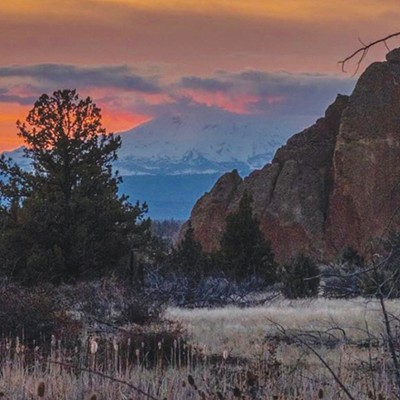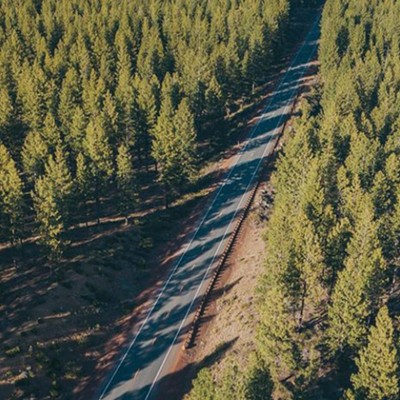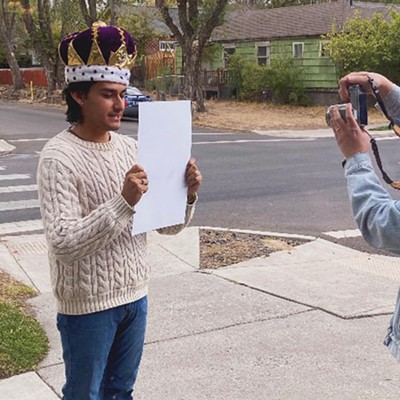REFUGEES CONTRIBUTE TO CLIMATE CRISIS
My view that technology is isolating many of us from the natural world was reinforced in the latest issue of the Source. On page six you editorialize in support of 10,000 and probably more, Syrian refugees to come to the U.S. On page seven, you ran a five-page article explaining concerns about the impact of global warming on our future.
Neither the Source, nor the environmental groups who are concerned about warming trends seem to draw a connection between global warming and the increasing number of humans. More people will mean more cars and homes using various fossil fuels. What is the point of raising fuel efficiency standards from 20 mpg to 30 mpg if you are going to have twice as many cars in the future? Even though we are increasing energy efficiency, millions of refugees and immigrants will significantly add to our carbon footprint. In other words, our projected U.S. population of 350 million 2050 will use more resources than the present 300 plus million.
Consider that the U.S. has 12 to 20 million illegal immigrants, over 100,000 in Oregon alone. Since 9/11, the U.S. has taken over 750,000 refugees with many more to come. When the Statue of Liberty was built in 1886, we had a U.S. population of about 55 million. Most of our future population increase will be due to immigration. We want to be compassionate, but we cannot take in all the needy people of the world. If the projected impacts of global warming come true, our children will regret the size of the population we have now. Making people aware of the threat of both excessive human population growth and global warming is a huge task, and I am not optimistic we will react in time.
—Dick Harris
SWAP LANES FOR SAFETY
As a motorist who drives the Bend Parkway daily I have an observation that may be of some benefit to fellow motorists. There are two lanes going each way on the Parkway, one lane (the one on the right) is generally referred to as the slow lane and the one on the left I referred to as the passing lane. It is my observation that the vast majority of motorists crowd the slow lane and generally avoid the fast lane.
I would suggest that we swap lanes. What would happen if most motorists stayed in the fast lane and only entered the slow lane just prior to exiting the Parkway? The result, I suspect, would be a measured increase in safety because motorists could enter and exit the parkway without the immanent fear of being hit.
Currently the fast lane is more or less empty. The next time you are on the Parkway ask yourself if you intend to exit in Bend. If not, then there is no reason for you to be in the utility lane (slow lane). Simply drive in the thru lane (fast lane) where you find hardly any cars. Also if you are southbound and driving by the Lafayette and Hawthorne exits give the poor motorists trying to enter traffic a break. Change lanes to the thru lane and allow us to enter traffic. It's very difficult to enter the Parkway from a dead stop, perpendicular to the flow of traffic. With this small change we can all share the roads and enjoy a little more safety. It's worth a try.
—Martin Adler
OREGON CLIMATE BILL OFFERS HOPE
As I write this, the U.N. Conference on Climate Change is wrapping up in Paris. The big question on my mind is whether some concrete action will finally be taken to reduce greenhouse gasses or will we punt this issue again to the next generation. If we don't make much progress this time, will it be too late to avoid some tipping point for projected temperature increases, with the associated ocean rise, mass droughts, wildfires and fresh water shortages? Fortunately, Oregonians don't have to wait for the rest of the world: we will have the option in 2016 to do something about man made global warming locally. There is the healthy climate bill that gives Oregon the opportunity to act on climate and avoid climate catastrophe. It will put a cap on carbon pollution while generating income for rural and urban communities. I believe we have a moral obligation to our children and grandchildren to pass on a livable planet. Please support this bill by writing your representatives in Salem. Let's have Oregon lead the world in transitioning to a 21st century clean energy economy!
—Jeff Cole
IN RESPONSE TO "SLIPPER: PAY TOGETHER" (12/10)
No doubt, the "C.O. Crusaders of Taxophobia" will soon flood your inbox with their diatribes, in response to the 12/10 Slipper (page 6). I will keep this short, so they have more room to rant: WELL SAID!
—Joe Fabietz
SUNSET PARK IS FOR THE BIRDS
Bend Parks and Recreation Department has been pursuing big, ambitious goals lately, but some of us would like to see more emphasis on preserving more natural park settings. Not everyone wants an expanse of green grass that requires lots of water, chemicals and maintenance, which is dotted with playground equipment that can't be used much of the year and which drives away most of the native species of birds and animals.
Sunset View Park is a small oasis huddled between Newport Hills and Northwest Crossing. It's thick with large ponderosas and in the past has been a resting spot for migratory birds from Central America on their journeys north and south as well as being home to a number of local bird and animal species. It's home for quail, flickers, several species of nuthatches, titmice, pine siskin, stellar jays, two types of woodpeckers and both Cooper hawks and sharp-shinned hawks. Migratory birds have included grosbeaks, lazuli bunting, Western tangiers and two species of hummingbirds that use the area in summers to raise their young. Three species of squirrels also consider this area home and many if not most of these birds and animals will never return if Bend Parks and Recreation Department develops the park as they plan to do.
Not only do the park's small size and many large ponderosas make it a poor area to grow grass, but doing so will drive away many of the native species that make this area their home. Restoring the native habitat would not only encourage native birds and other animals to stay, but would reduce the amount of water, chemicals and maintenance required, which one would think is a good thing.
Many of us would like to see Sunset View Park become a "bird park," where native and migrating species find a resting place so they continue to come to Bend. It could possibly be a perfect partnership for the High Desert Museum to build areas of natural habitat for the native species so community groups could experience them up close and local. If this sounds like something you'd like to support, please contact Bend Parks and Recreation Department at 541-389-7275 and tell them to make Sunset View Park Bend's first, "bird park." Don't let them destroy this wildlife oasis in Bend.
—Ron Guiley
Ron—We agree that not every park needs to be a big patch of thirsty grass, manicured to the nines. In this climate, "natural" spaces make more sense than "green" spaces. For that bit of insight, enjoy a cup of coffee on us at Palate. You can take it to go and enjoy it while you watch the birds.




















